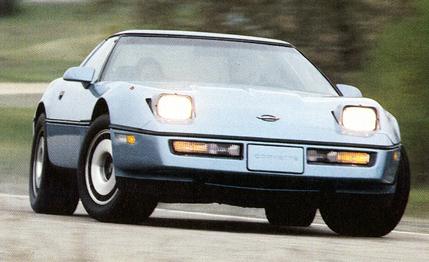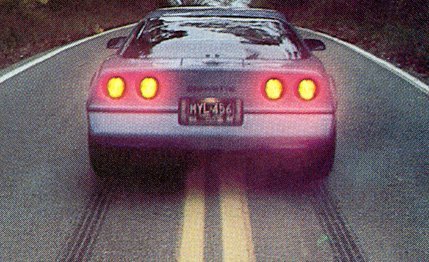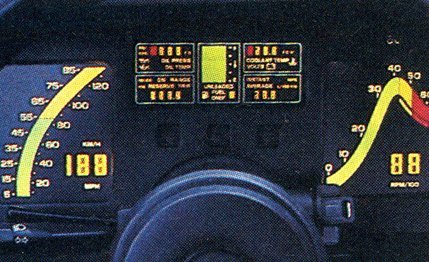 Archived Road Test
Archived Road Test
You have waited long enough. So let's get it over with right now: the new Corvette is a truly stout automobile. It is all that the fevered acolytes so desperately wanted their fiberglass fossil to be — a true-born, world-class sports car loaded with technical sophistication.
Lest such a claim be dismissed as more hyperbolic reverie about the blowzy old doyenne of the boulevards, consider the following:
Item: The roadholding on this new machine is so advanced that we recorded the highest skidpad lateral acceleration — 0.90 g — ever observed with a conventional automobile by this staff. That figure practically trivializes the previous high-water marks, in the 0.82-g range, generated by such exotics as the Porsche 928 and assorted Ferraris.
Item: It is hands-down the fastest American automobile, capable of 140-mph top speeds, 0-to-60 times under seven seconds, and 15.2-second quarter-mile forays at 90 mph. In fact, these figures qualify the Corvette as one of the half-dozen fastest production automobiles in the entire world!

Item: Its braking, thanks to an advanced Girlock four-wheel-disc system, makes the car stop as if it had been dropped into a sand bank. Our 70-to-0-mph brake test produced a stop in a mere 173 feet — seven feet shorter than the best 1982 distance of 180 feet, recorded by a Porsche 928, and not far off the all-time record of 165 feet, set by a Porsche 930 Turbo!
"I'll take all comers. You bring what you want," is the way Fred Schaafsma puts it, and he ought to know. He is part of the tiny cadre of Chevrolet engineers who, while huddled in a temporary patchwork of trailer offices at GM's proving grounds in Milford, Michigan, brought the new car into being. A native of the Netherlands, Schaafsma (real first name: Freerk) is fiercely loyal to the car he helped develop and is proud of its unique combination of qualities: its traditionally lusty big-inch V-8, its fully independent, forged-aluminum suspension with plastic leaf springs, its optional four-speed manual transmission with automatic overdrive in the top three gears, its plastic-over-steel-frame construction. "I was born and raised in Europe, and I know that a car doesn't necessarily have to be like a European machine in order to be good," he says. He and his cohorts openly admit, however, that the Porsche 928 was the "data point" on which a great deal of the Corvette development centered. "When we compared our car against the Porsche, I can tell you there were a lot of good feelings at Chevrolet."
For those who expected the 1984 Corvette (yes, '84 — it will be marketed as such for eighteen months) to be a cross between a Lamborghini Countach and an F-16, there will be disappointment. The shape is clean and forthright, devoid of the phallic silliness that distinguished its predecessor during its protracted career. It comes in a single body style, that of a classic two-seat sports car with a removable, one-piece roof panel and a hatchback. It is 8.5 inches shorter overall than the old car, and its wheelbase, at 96 inches, is two inches shorter. But the new car is beamier by an equivalent amount, which translates into additional interior space, including 6.5 inches extra shoulder room.

A first encounter tends to leave one faintly unfulfilled, as if the long-awaited confrontation should have been more dramatic. But that notion fades as the honesty of the effort becomes evident. This is a dead-serious sports car. It defers to the bizarre only with its video-game instrument panel, which features all manner of multicolored, liquid-crystal bar graphs and digital displays in metric and English. "We were having a little fun with the instrument panel," admits Dave McLellan, the widely respected chief engineer on the Corvette project. "There are a lot of things about the car that go beyond basic needs, and in this sense the Corvette competes with things like fast powerboats and ultralight airplanes. Like them, the Corvette goes beyond serious transportation. This is a sports car, and we wanted it for one simple mission — to go fast."
That it does. Tucked into the optional, high-bolstered sport seat with its power backrest, lumbar, and bolster adjustments (the power activation is as light as and even simpler than a manual counterpart), one is poised for a ride on the outer limits of earth-based travel. Both visibility and control ergonomics are improved, and if one was pressed for a complaint, it would center on the rather clunky linkage of the four-speed manual transmission (all initial models will be four-speed automatics).